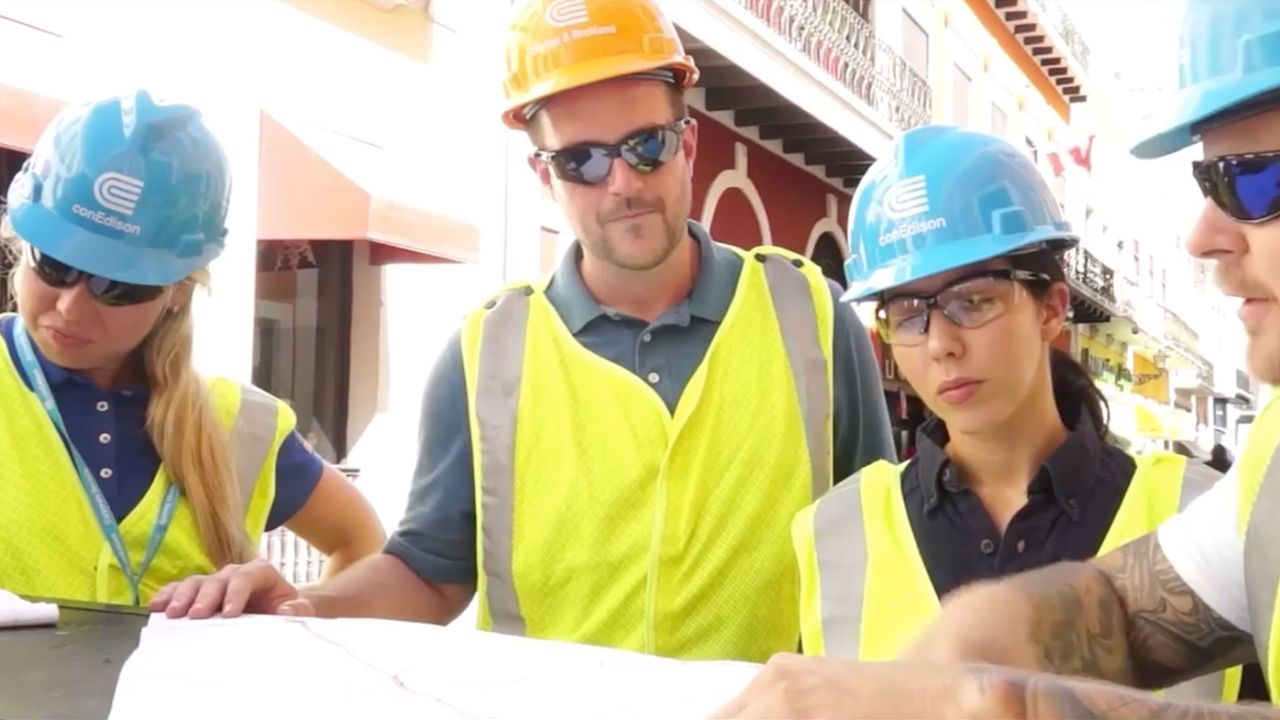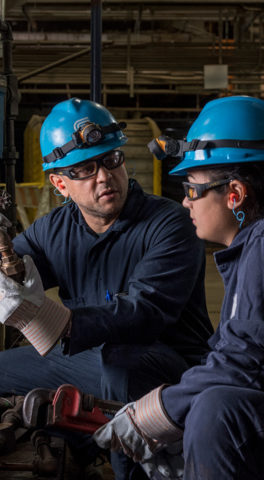
Safety & Environment
Public Safety
We invested more than $2.9 billion in 2016 to fortify our electric, gas, and steam infrastructure. This investment underscores our commitment to providing energy to millions of customers efficiently and responsibly while protecting the environment and keeping people safe throughout our service area.
Electric
CECONY continues to develop tools, techniques, and management strategies to improve safety, troubleshooting, and program efficiency. Distribution Engineering and Electric Operations teams developed thermal imaging of secondary assets and mobile contact voltage (also known as stray voltage) scanning in high-activity areas, and introduced latched vented covers. These efforts complement previously existing programs including contact-voltage detection, cover venting, and underground inspection.
CECONY’s underground networks are surveyed for contact voltage 12 times a year, using mobile detectors. In 2017, we found and eliminated 9,856 cases of contact voltage. Of those, 9,150 cases (93%) were on non-CECONY equipment (streetlights, electric signs, and other structures). We performed more than 26,000 inspections of our underground system (manholes, service boxes, and transformer vaults).
O&R’s electric system testing is completed at least once every five years. In 2017, O&R found and eliminated 12 cases of contact voltage, all on company-owned equipment, and performed 34,426 inspections and 29,307 tests.
In an emergency, our crews serve the public wherever we are needed. In 2017, we supported restoration in Binghamton and Rochester NY, Puerto Rico, Florida and South Carolina.

Gas
As part of our ongoing effort to reduce our carbon footprint and sharpen our focus on natural gas safety, we worked with the New York State Public Service Commission, New York City and the Environmental Defense Fund to develop a program to identify and reduce emissions from small volume, non-hazardous leaks of methane gas. Although not mandated by regulations, non-hazardous leaks were historically prioritized and scheduled for repair based on the availability of resources and other factors such as age of leak and complexity of the repair. In 2017, we focused on reducing the backlog of the non-hazardous leaks by successfully prioritizing and eliminating 140 out of the top 150 gas emitters. We continued to maintain historically low levels of our total leaks through 2017 and reduced the time it takes to repair all of our leaks to less than 30 days on average.
We have greatly increased investments in modernizing our gas infrastructure to further enhance public safety and reduce leaks, including accelerating our cast iron and unprotected steel gas main replacement program. We continue to perform monthly system-wide gas leak patrols of our entire gas distribution system, and improved our emergency response procedures with the Fire Department of New York as well as our coordination with key city agencies. We are also working closely with the New York City Department of Buildings to establish requirements and protocols related to building gas pipe inspections (Local Law 152) and the mandated use of residential methane detectors in most living spaces (Local Law 157). Additionally, we launched a pilot program in fourth quarter 2018 to install natural gas detectors near the gas service entry inside buildings that will communicate leakage alarms to our emergency response center.
Con Edison has a comprehensive, multi-channel and multilingual campaign to educate customers and the public at large – an estimated nine million people across New York City and Westchester County – about gas safety and the urgency of reporting gas leaks. The company reaches customers primarily through direct mailings, youth outreach efforts, advertising, digital initiatives (such as email campaigns, conEd.com and social media), and community events.
We also continued our successful media campaign, “Smell Gas, Act Fast,” featuring videos and social media posts that inform customers on what to do if they smell gas. The videos are communicated in English, Spanish, Chinese, and Korean.

Steam

We provide steam service for approximately 2.5 million people in Manhattan through an underground network of pipes. By generating steam primarily through co-generation, we provide efficient production and reduce emissions that would otherwise be generated by localized boilers and equipment. We focus on identifying ways to lower costs to customers, maintain high reliability, improve resiliency, and protect the environment. In 2017, we continued to achieve safe and efficient operations while meeting our customers’ needs and maintaining focus on continued bill reductions. We maintained an overall reliability rate of 100% and met a peak demand of 7.8 million pounds of steam on January 9, 2017.
